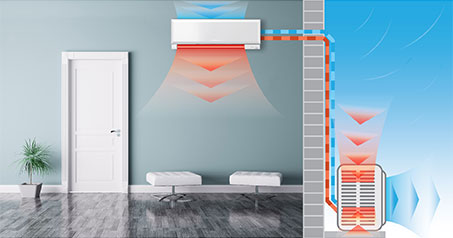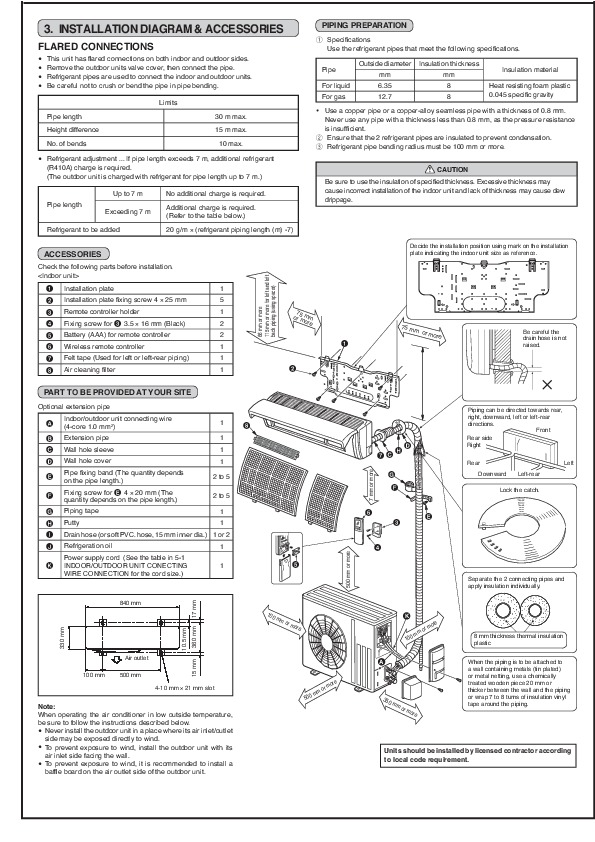Mitsubishi Electric Heat Pump User Manual
- Mitsubishi Electric Heat Pump User Manual Instructions
- Mitsubishi Electric Heat Pump User Manual 2017
- Mitsubishi Electric Heat Pump Remote Manual
- Mitsubishi Heat Pump Controller Instructions
Mitsubishi Electric PUHZ-ZRP71VHA Manuals & User Guides. User Manuals, Guides and Specifications for your Mitsubishi Electric PUHZ-ZRP71VHA Heat Pump. Database contains 1 Mitsubishi Electric PUHZ-ZRP71VHA Manuals (available for free online viewing or downloading in PDF): Service manual. Technical and Service Manuals. Please login to access BDT online customer service system for resellers of Mitsubishi Electric product in New Zealand. For all other products or any other service or support enquiry you can contact us, or if you would prefer to speak directly to us please call 0800 784 382 during normal office hours.
Do you know the difference between running an air conditioner on HEAT mode compared to AUTO mode? This simple guide will explain the difference.
The unit purely operates in heating mode.
The indoor unit will blow warm air into the room until the set temperature is reached. Once the temperature is reached, the inverter compressor in the outdoor unit will slow down and eventually stop.
The indoor fan will effectively stop when the indoor unit cools down to avoid a draught. When the temperature in the room falls heating will resume.
When summer comes you will need to manually change the mode to COOL or AUTO (recommended).
(Auto changeover mode)

In this mode, the unit will run on HEAT or COOL depending on the room and set temperatures. Simply set the desired temperature and the inverter compressor will speed up and slow down to maintain temperature. Once the temperature is reached, the outdoor unit will slow down and eventually stop.
The indoor fan will effectively stop when the indoor unit cools down to avoid a draught. When the temperature in the room falls during winter, heating will resume.
If the room temperature is 2ºC above the set temperature in winter, the unit will automatically switch to COOL to maintain temperature.
During summer, the unit running on AUTO mode will automatically switch to cooling to maintain temperature.
For convenience, AUTO mode is recommended. Just set and forget.
In recent years, the need to be more energy conscious and environmentally responsible has become increasingly important to us all. As a leading manufacturer of air conditioning systems, Mitsubishi Electric constantly strives to meet and exceed the increasing demands placed on the industry. Through research and development for the future, we proudly introduce our new Air to Water system which uses water as a heating and cooling medium for space heating/cooling and hot water supply applying the heat pump and heat recovery technology.
Features

- Booster unit provides hot water to a maximum of 70C
- HEX unit provides 45C in heating and down to 8C in cooling

Air to Water Series making the most of Heat Pump and Heat Recovery Technology
Heat pump and heat recovery technologies are already well known in the air conditioning market and proved to be efficient for cooling and heating. Mitsubishi Electric has now designed Air to Water (ATW) Series utilising the technologies to provide hot water.
Here is an overview of the technology that is used in the ATW system:
Heat Pump Technology
Mitsubishi Electric Heat Pump User Manual Instructions
- Remarkable energy consumption efficiency
- Generating much larger heat energy than the input energy
- Heating or cooling operation
Heat Recovery Technology
- Effective use of waste heat
- Heating and cooling simultaneous operation
Both technologies, compared to conventional systems of boilers, not only have incredible design flexibility, excellent use of energy and reduce CO2 emissions, there is a further reduction in capital costs. Negating the need for the installation of gas supply entirely, the ATW Series can provide hot water by means of electricity.
Mitsubishi Electric Heat Pump User Manual 2017
Basics of air conditioning
Heat Pump
- Remarkable energy consumption efficiency
- Generating much larger heat energy than the input energy
- Heating or cooling operation
From the energy output side, the operation characteristics of a heat pump are different to conventional systems (such as electric/gas/oil boilers or electric heaters). With conventional systems, 1kW of input energy provides less than 1kW of output energy or heat. With a heat pump system, every 1kW of input energy is converted into an average of 2~5 times of output energy or heat by absorbing heat from outdoor air. Also, a heat pump, as its name shows, “pumps up” heat from a low-temperature source, outdoor air, for example, and transfers it at a higher temperature in a building, making it more efficient than conventional boilers and a natural choice for low-cost heating and hot water.
Heat Recovery
- Effective use of waste heat
- Heating and cooling simultaneous operation
Heat recovery system can provide an ideal solution when taking a look at the system from an exhaust energy point of view. This is because air conditioning and hot water are used throughout the year and with a heat recovery system, exhausted heat from the indoor unit is diverted to be reused for a different purpose. For example, the waste heat from cooling operation is reused for heating or hot water supply, and wasted heat from the heating operation or hot water supply is reused for cooling operation or cold water supply. The more frequently heating and cooling simultaneous operation is carried out, the higher the energy saving effect becomes.